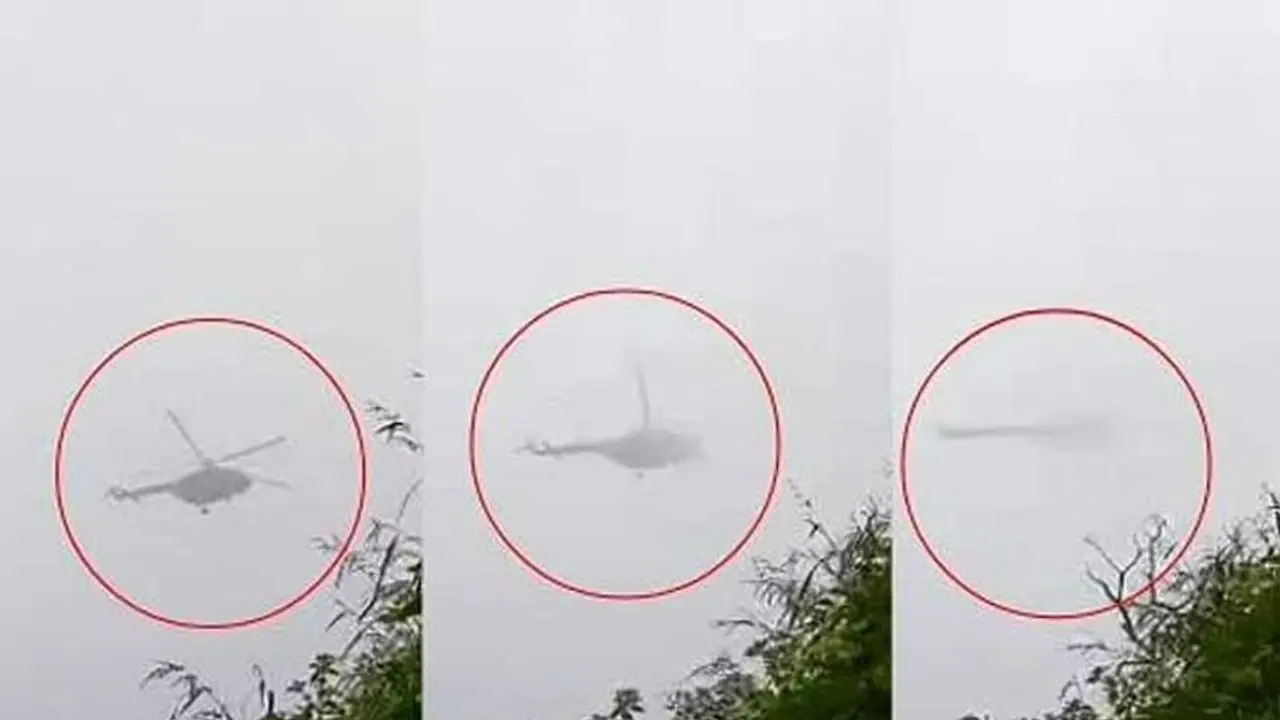Weather experts observe that the atmosphere was not at all supportive of helicopter movement at the Nilagiri range at the time when Chief of Defence Staff General Bipin Rawat's Mi-17 V5 was passing by.
There seems to be a scientific explanation to what could have triggered the MI-17 V5 helicopter carrying Chief of Defence Staff General Bipin Rawat, his wife Madhulika and 12 others to lose altitude and suffer a fatal crash. If weather experts are to be believed, the atmosphere was not at all supportive of a helicopter movement at the Nilagiri range at the time of the incident. In fact, their view is that the spot where the helicopter went down may have been under the threat of severe turbulence imparted by the mountain.

According to the statement given by Defence Minister Rajnath Singh in Parliament, the Air Traffic Control at the Sulur Air Base lost contact with the IAF helicopter around 12:08 pm. At that moment, the helicopter was near the south-eastern slope of the Nilagiri peak (which is about 2630 meters above mean sea level). That was the location of the Point of Incidence.
Now, weather experts say, one needs to keep in mind that due to the warming scenario the vertical wind variations in the Troposphere is highly chaotic, especially in the mid-Tropospheric levels. These wind variations change on an hourly basis and thus cannot be caught even in a day's forecast.
Let's take a look at the Global Forecast System data simulation provided by the Null Group that clearly shows how the ill-fated Mi-17 V5 may have experienced vertical winds:
Surface
Wind Speed: 6 km/hour
Wind Direction: 90 degree
850 hPa (1.5 km from the ground)
Wind Speed: 8 km/hour
Wind Direction: 70 degree
700 hPa (3.5 km from the ground)
Wind Speed: 6 km/hour
Wind Direction: 140 degree
500 hPa (5 km from the ground)
Wind Speed: 16 km/hour
Wind Direction: 90 degree
250 hPa (10.5 km from the ground)
Wind Speed: 40 km/hour
Wind Direction: 245 degree
70 hPa (17.5 km from the ground: Tropopause level)
Wind Speed: 32 km/hour
Wind Direction: 65 degree
Giving reasons for their theory that the atmosphere was not supportive of a helicopter movement, weather experts say that a terrific wind shear (both speed and direction) was there in the atmosphere at all levels. Many synoptic patterns made the wind structure very complicated at that time over the Point of Incidence.
The Point of Incidence was at the slope of the Nilagiri mountain ranges near Coonoor, situated at the height of about 1500-2000 metres.
According to weather experts, factoring that the Convective Available Potential Energy was 481 Joules/Kg at the Point of Incidence, the atmosphere might have slowly initiated the convection current. This could have developed vertical wind while the IAF helicopter was at the Point of Incidence.

Image: Wind circulation at the height of 700 hPa level at the time of incidence. The green circle is the point where the helicopter crashed. Source: GFS data simulation by the Null Group
Stating that the mountain would have definitely pumped up Turbulent Kinetic Energy at the Nilagirirange up to a height of about 700 hPa within a value of 0 .5 to 2 Joules/Kg at the time of incidence, they believe that the point where the helicopter was last seen may have been under the threat of severe turbulence imparted by the mountain.
They further observed that the relative humidity at the 850 hPa level or 1.5 kilometres from the ground was 90 per cent, which indicates that the atmosphere was near saturation at that level. So the air will be less dense and will not give much lift to the flying object at the location of the Point of Incidence.
Also Read
General Bipin Rawat's demise: The last salute to the departed
CDS General Bipin Rawat: It was always 'nation first' for the soldier's General
'Jung ka ek usool hai...': 10 iconic quotes by CDS General Bipin Rawat
